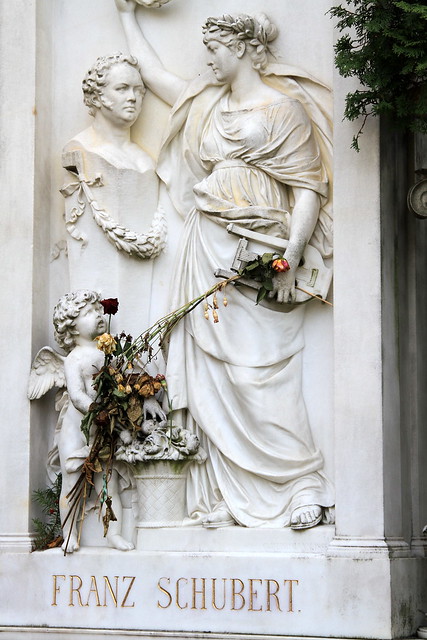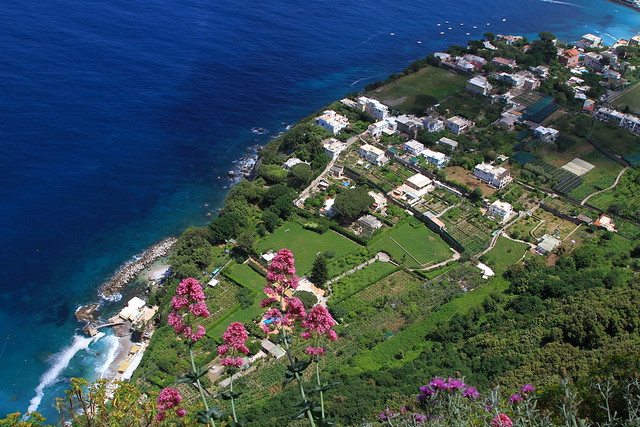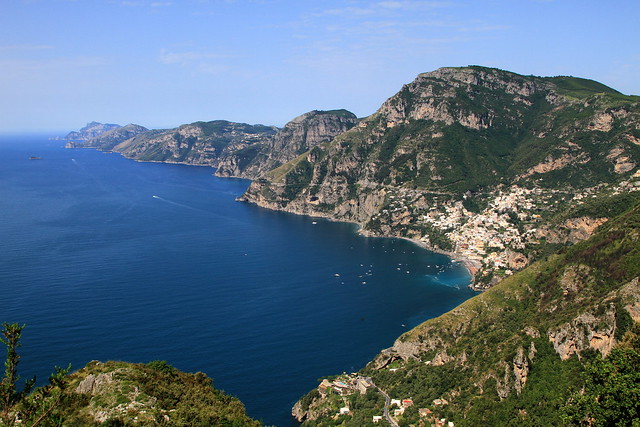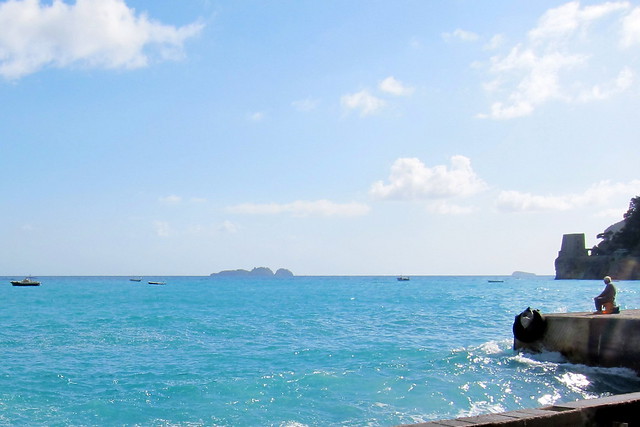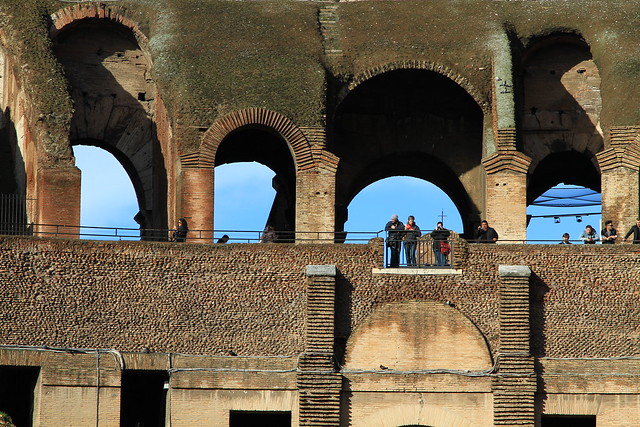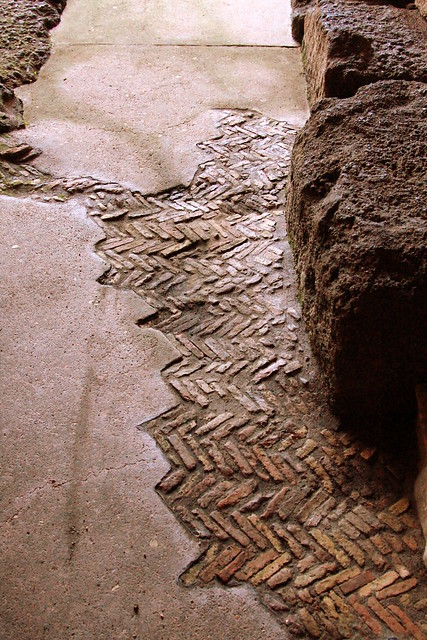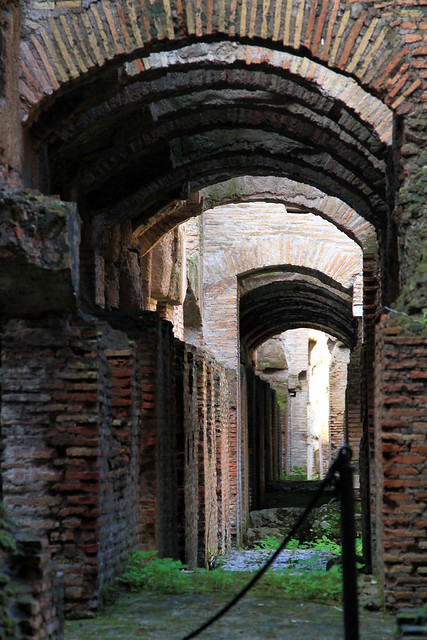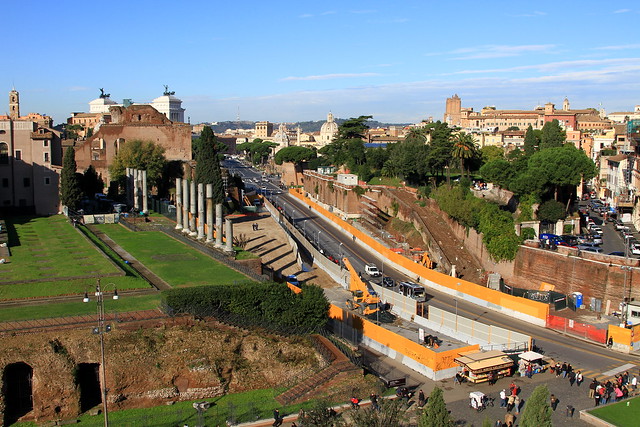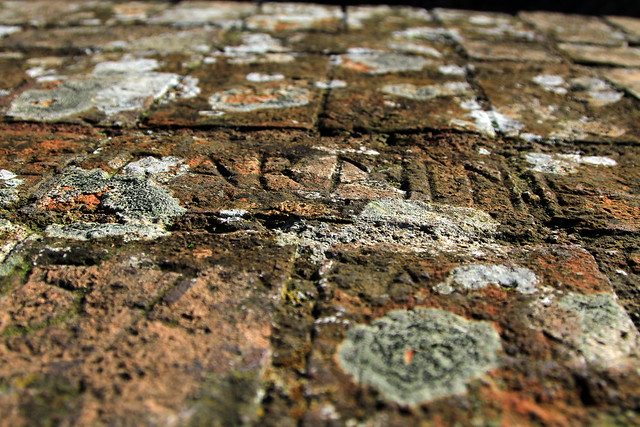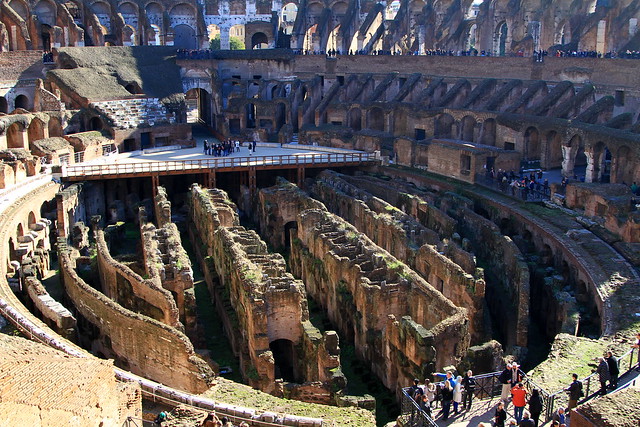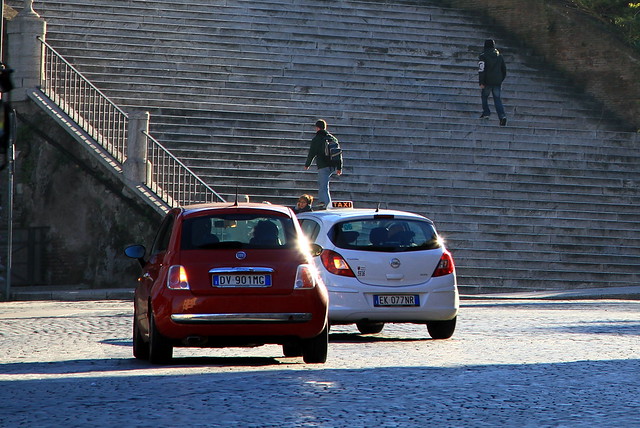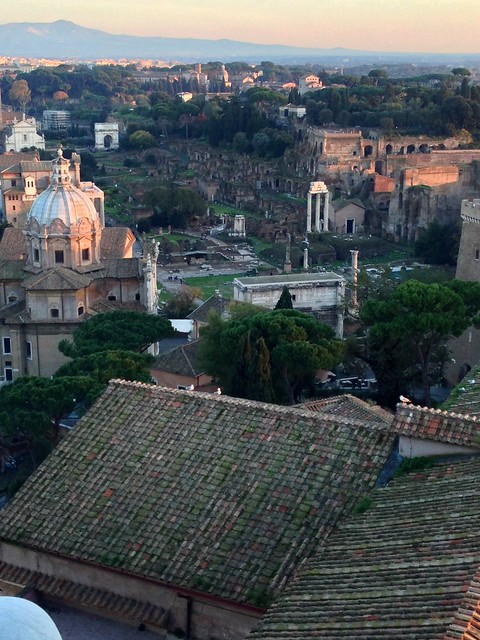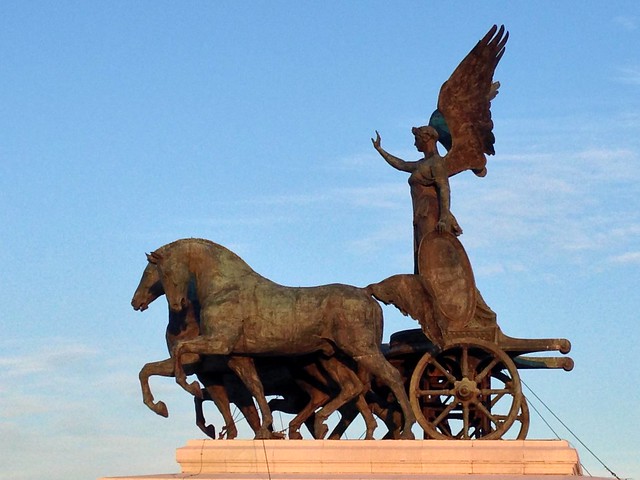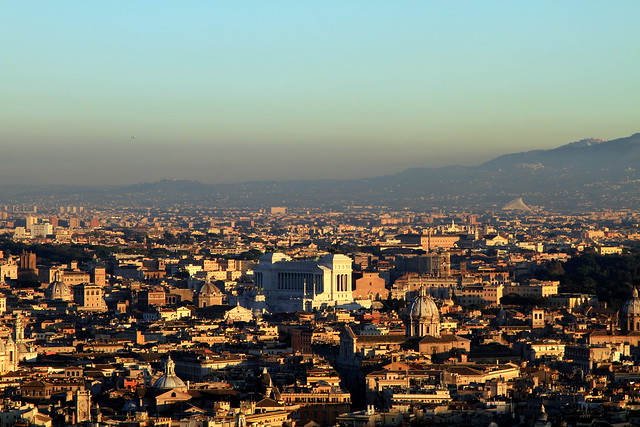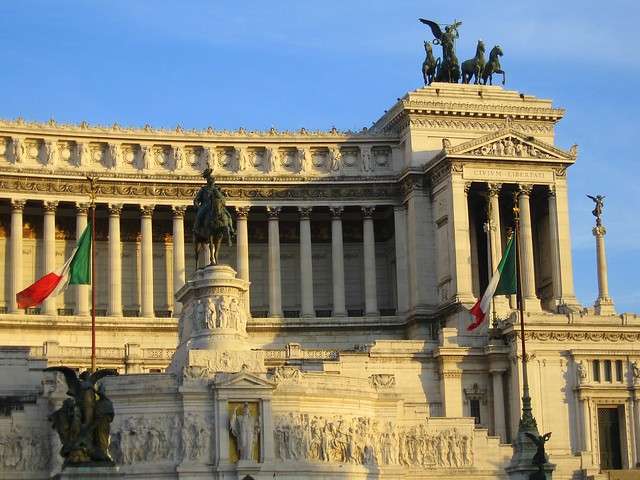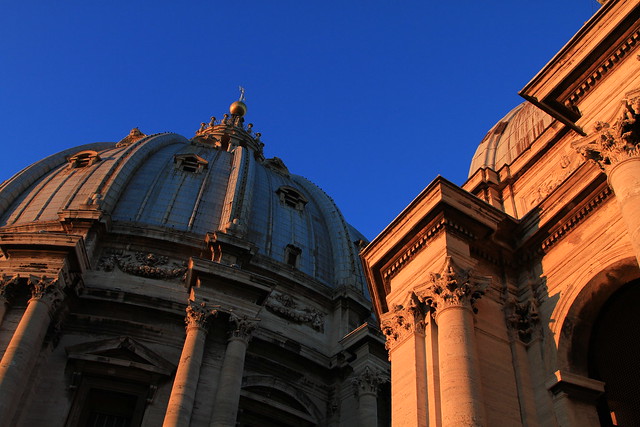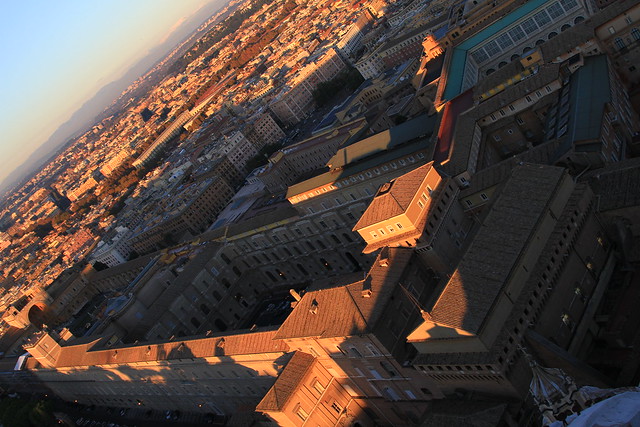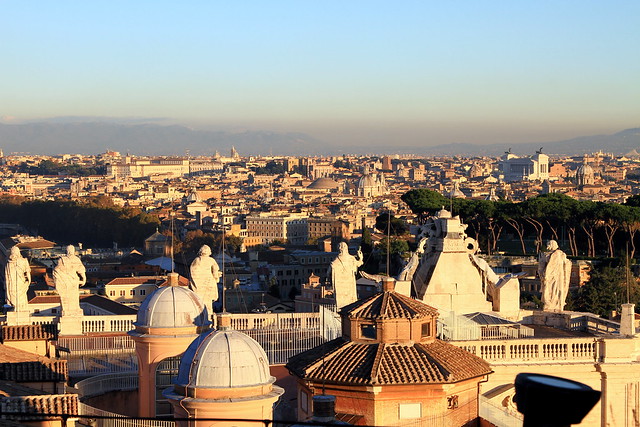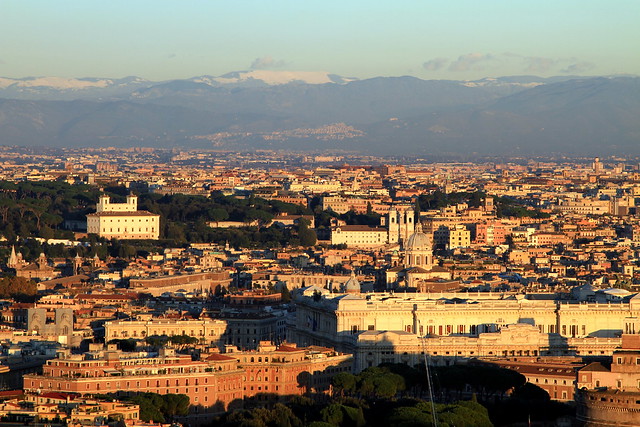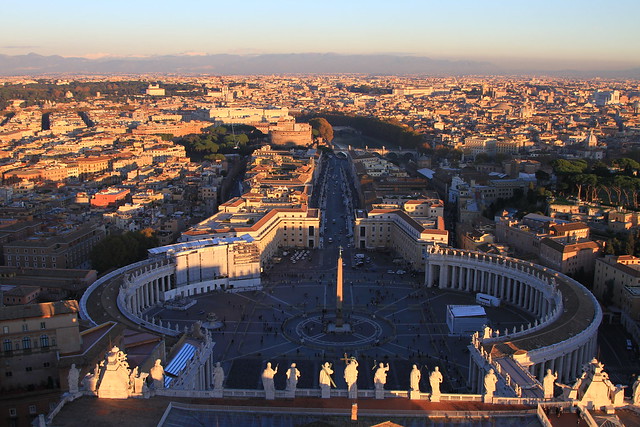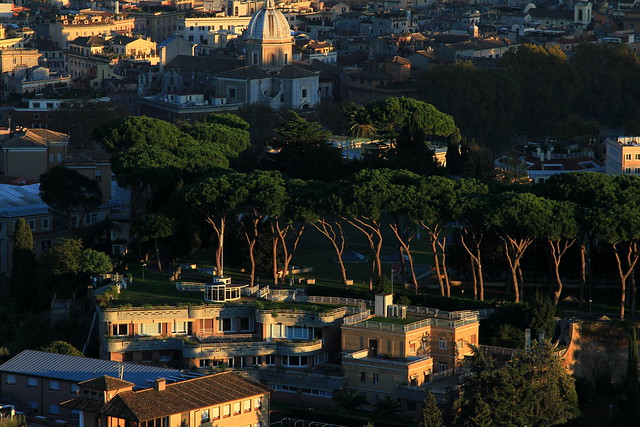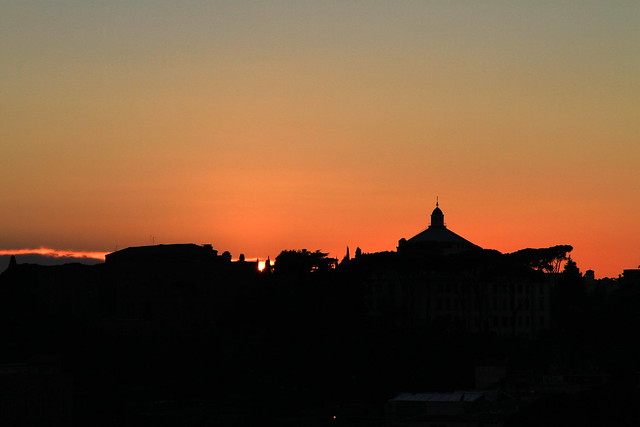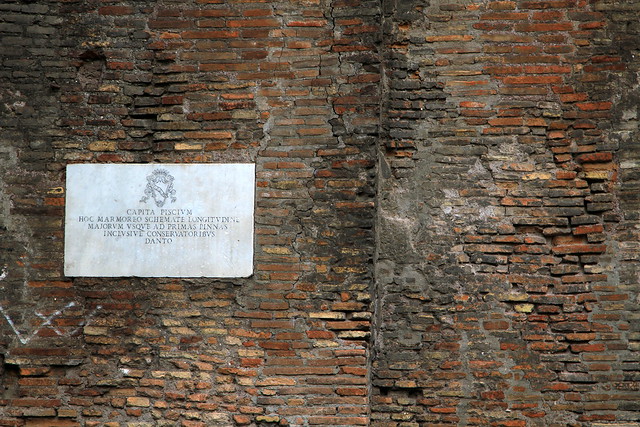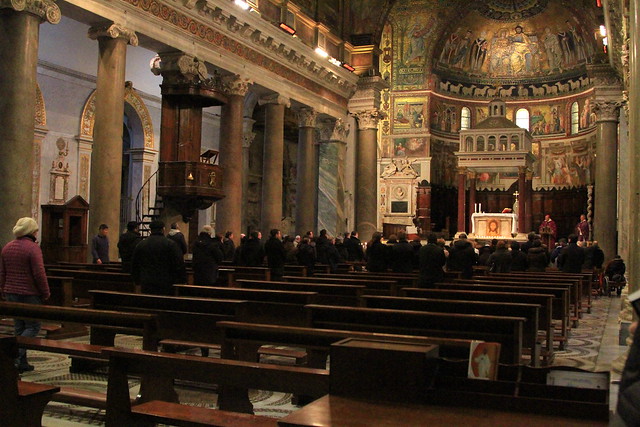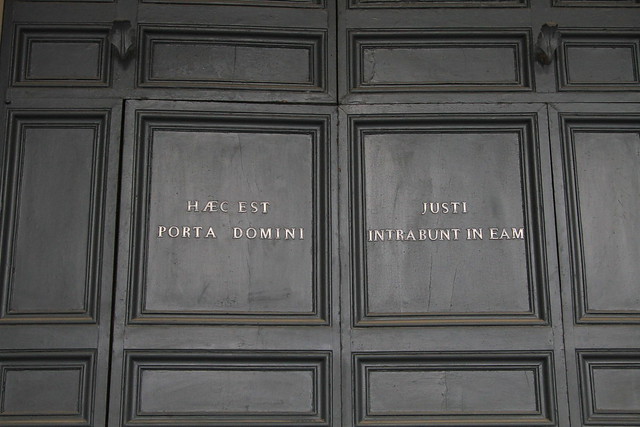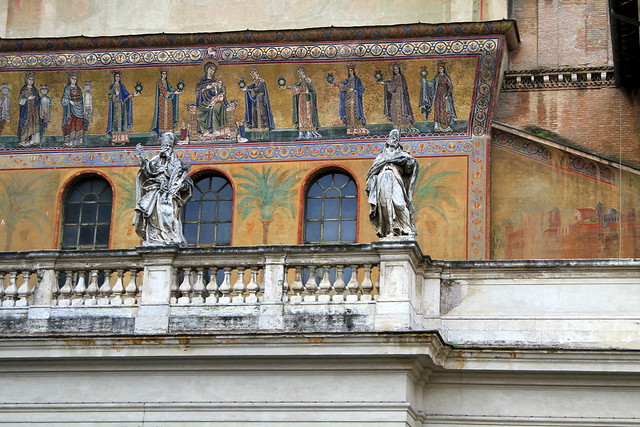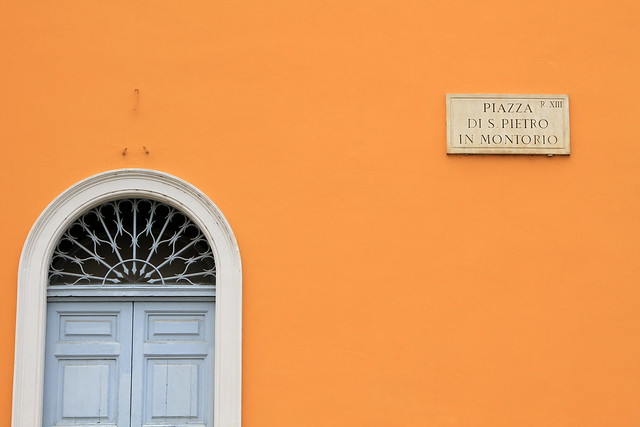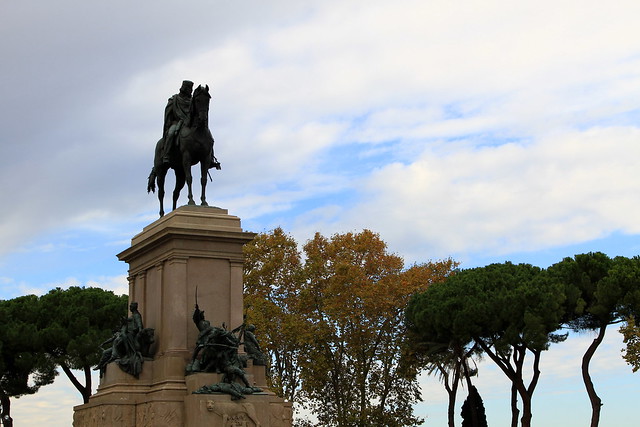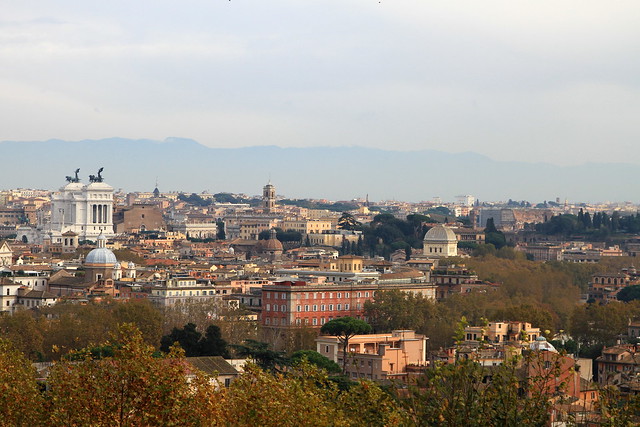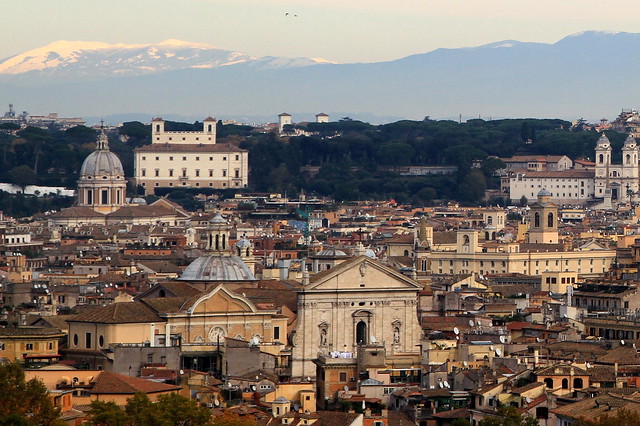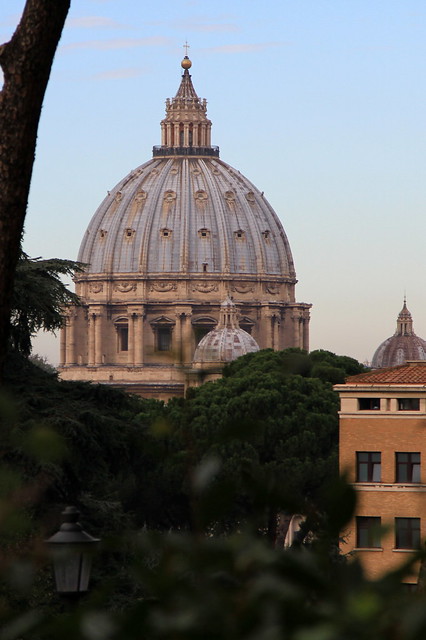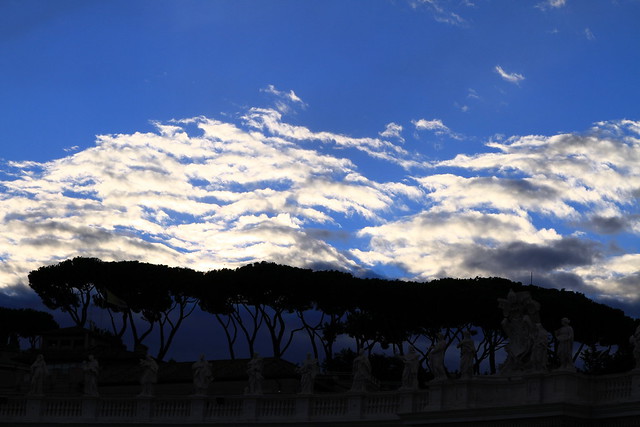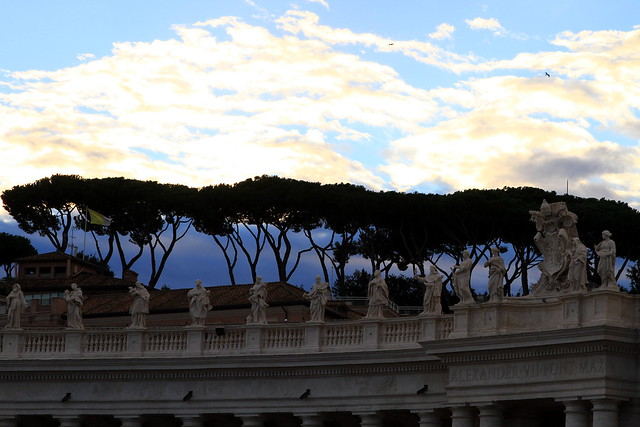He would be 217 years old! Sadly, though, he only lived to be 31.
Born in Vienna and a contemporary of Beethoven, he was an incredibly prolific composer with over 600 songs. However, his popularity during his lifetime did not extend far beyond his circle of friends. Posthumously, though, he was much more appreciated.
Ultimately his final resting place became Vienna's Zentralfriedhof. You may have seen this cemetery in the final scene of The Third Man, a postwar movie set in Vienna and starring Orson Welles. He is buried mere feet away from Beethoven. Franz, that is. Not Orson.
Happy Birthday Franz Schubert. January 31, 1797.
Friday, January 31, 2014
Tuesday, January 28, 2014
Books to read to prepare for a trip to the Amalfi Coast (Italy)
As usual I get home from a much anticipated trip, which was preceded by nonstop reading and daydreaming and questions here, there and everywhere… and then a few months go by and I still haven't gotten my act together on everything I saw and did! Here are a few books I read to prepare for my trip to Capri and the Amalfi Coast as well as a few choice photos. Enjoy!
Above are some ceramics in Positano.
Greene on Capri by Shirley Hazzard. This is a book about Graham Greene's seasons on Capri (he owned a home there for something like 40 years) and it was written by his friend Shirley Hazzard. I read this before I left, in one weekend, and I wish I had read it after I got back instead. I would have liked a frame of reference for Capri before reading it. It's the kind of book that would benefit from a bit of a background ahead of time, I think. I'll re-read it again at some point once I get through my mountain of other books. I noticed that there are a variety of villas owned (or formerly owned) by famous writers on Capri. I guess being an author used to pay better than it does now!
Above is the view from Villa San Michele on Capri.
Rick Steves Naples and the Amalfi Coast. I will buy his books before I visit a brand-new place, usually, since he gives good basic information. I didn't take it with me, and the only use I would have gotten out of it anyway was the chapter on Pompeii. I should have photocopied that chapter for my luggage. I would have benefited from a guide for my too-short visit to Pompeii.
Above is the view above Positano, looking down as well as along the whole coastline. You can see the Faraglioni in the distance.
Two small compact hiking books: Walking on the Amalfi Coast by Gillian Price and Sorrento/Amalfi/Capri by Sunflower Guides. This last has a website which offers updates to its book in between editions: http://www.sunflowerbooks.co.uk/product/walking-in-sorrento-the-amalfi-coast-and-capri/
I will say that for the hikes I did end up doing this time, and the fact that I looked up a local guide for the Pathway of the Gods, I actually did not need either book although they will be useful on the next trip when I go more afield. My hotel on Capri gave great advice on my walks on Capri and the eastern side of the island is so easy to navigate. If I had to choose only one I'd probably pick the Sunflower Guide but they were both interesting to read and were good for some daydreams.
Above: more coastline, this time from the Sentieri degli Dei.
My Amalfi Coast by Amanda Tabberer with photos by Carla Coulson. Amanda Tabberer is a famous Australian actress who moved to Italy in her 20s and met and fell in love with the son of the owner of Da Adolfo, a restaurant in Positano. This book is eye candy extraordinaire for the Amalfi Coast - Carla Coulson is my favorite photographer and I could easily recommend this book just for the photos alone. While it's mostly a love letter written by Amanda Tabberer to her much adored Amalfi Coast (including the story of her life there including marrying an Italian hunk and having a son), you could also call it a guide book in that she describes several of the towns along the coast including her favorite places in each as well as her favorites places to eat. She talks about some of the history of the area, some of the festivals and churches, and in addition to contemporary photos she has included some older photos of her family and friends enjoying themselves whether boating or hiking. What a life.
Above is the main beach (Spiaggia Grande) in Positano.
Fodors Amalfi Coast, Capri and Naples (borrowed). This was a really useful guidebook and I probably should not admit this here (!!) but it might be the only time I've used a Fodors guidebook. Based on this experience I will have to change that - it was well written and had a lot of useful and interesting information.
Above is the pier in Positano. Sitting by the dock of the bay, or something.
The Story of San Michele by Axel Munthe, which I bought from Amazon when I got home. Not yet read.
Below is his villa and you can see the mysterious Sphinx.
HAPPY READING!
Sunday, January 26, 2014
Rome: A Low Point. How low? Hypogeum low!
I have visited the Colosseum each time I have visited Rome. How can you not be drawn to this glorious and passionate feat of engineering? As my previous visit was in 2007, however, I had still not visited the Hypogeum as it was not yet open to the public. Hypogeum means "underground", literally, and in this case it means the underground of the Colosseum. Clearly the Hypogeum tour was no downer - but it was a very low vantage point.
I did some research and found the website to order tickets directly from Coop Culture.
http://www.coopculture.it/en/events.cfm?id=6
I selected the first tour of my first full day in Rome. Since it was at 940 AM, it still gave me the opportunity to sleep until 730 AM (which is sleeping in, for me) and have a leisurely breakfast and still make it to the Colosseum in plenty of time.
Our tour guide showed up and handed each of us a small one way radio. There were perhaps 20 people there and she knew we would be scurrying around during parts of the tour (the above ground parts, there is no scurrying below ground) and so we had her radio voice to tell us what we were looking at. Naturally I was working my camera during all of this and I only have two hands, so if I wasn't near her I missed the descriptions.
The tour starts on the large wooden stage/platform while she described the setup of the Colosseum and some of the engineering/architectural finds. From this vantage point you can look down and peer directly into the tunnels below. You also are standing at the vantage point of the gladiators and the poor hapless animals who were meant to fight to the death. As you look at my various photos posted and see how tiny people look up in the stands you will be able to see the scale of the Colosseum.
More views from the platform:
http://www.flickr.com/photos/skywalkerbeth/tags/viewfromplatform/
After we wandered around the wooden platform for a while she took us outside the Colosseum in order to descend the stairwell to the Hypogeum. It is, of course, very dark and dank but naturally nothing like it must have been when it was in use when there was no natural light and needed to have burning lamps for light. For starters, now, there is a lot of fresh air coming in because it's almost entirely exposed but for the initial part which was still under the stage. It would have been, during the summer, hot, sweaty, close, oppressive, noisy and probably unbearable. But bear it they did.
Even though it is very open you still get a sense for the maze of tunnels it was. You don't get to wander very far, in fact, we barely walked out into the uncovered area as it was roped off. Perhaps at a different time they might let you go farther out into the (now open) tunnels.
The guide pointed out the sewer and the interesting findings from them as well as discussing the challenges in excavating them. Apparently archeologists get very excited by sewers because you can tell a great deal about a culture by its waste. And the Colosseum was definitely a micro-culture. They found a variety of animal bones which could even have been food for the crowds, not necessarily animals fighting each other (such as chickens). For that matter, I'd suspect given the roles the Colosseum played over the years a number of the animal remains could have been meals for squatters later in the life of the Colosseum, too.
She pointed out in a few places the evidence of the elevators which were lifts operated by ropes and pulleys. Later she talked about the tunnels under the Colosseum which led to the Ludus Magnus (gladiator school) nearby. I kept picturing in my mind a present day large sports stadium, and imagining some future society trying to explore such a superdome sports stadiums and trying to piece together what a Super Bowl must have been like - or our culture in general. Makes you wonder how close to the truth they would be, those future archeologists.
I also found it so compelling to think of this massive and complex engineering marvel being constructed at the time it was. Think of how primitive the tools were and how this building has withstood the rot of centuries. Back to a present day superdome - can you see one of those lasting even 100 years, especially if it was left to rot?
Think of who walked here:
And through here:
Some more photos from down below:
http://www.flickr.com/photos/skywalkerbeth/tags/hypogeum/
Finally, you get access to yet another area that isn't open to the general public - the nosebleed seats. You climb up to the very top, on the side that faces the forum. What a view from up there! You are so high you are looking down on the Forum - taller than the Arch of Titus, and just about taller than the Arch of Constantine. I snapped a number of shots up here, too. Can you see San Giovanni in Laterano?
More photos from the nosebleed seats:
http://www.flickr.com/photos/skywalkerbeth/tags/colosseumtop/
In looking at some photos I had taken in 2004 I noticed that there used to be a walkway from the stage to the other side which went straight over the middle and now it appears to be gone. I wonder when they took that out, and why. Below is present day - about ten years ago there was a walkway going straight across.
Other photos from around the Colosseum:
http://www.flickr.com/photos/skywalkerbeth/tags/colosseumaddl/
I did some research and found the website to order tickets directly from Coop Culture.
http://www.coopculture.it/en/events.cfm?id=6
I selected the first tour of my first full day in Rome. Since it was at 940 AM, it still gave me the opportunity to sleep until 730 AM (which is sleeping in, for me) and have a leisurely breakfast and still make it to the Colosseum in plenty of time.
Our tour guide showed up and handed each of us a small one way radio. There were perhaps 20 people there and she knew we would be scurrying around during parts of the tour (the above ground parts, there is no scurrying below ground) and so we had her radio voice to tell us what we were looking at. Naturally I was working my camera during all of this and I only have two hands, so if I wasn't near her I missed the descriptions.
The tour starts on the large wooden stage/platform while she described the setup of the Colosseum and some of the engineering/architectural finds. From this vantage point you can look down and peer directly into the tunnels below. You also are standing at the vantage point of the gladiators and the poor hapless animals who were meant to fight to the death. As you look at my various photos posted and see how tiny people look up in the stands you will be able to see the scale of the Colosseum.
More views from the platform:
http://www.flickr.com/photos/skywalkerbeth/tags/viewfromplatform/
After we wandered around the wooden platform for a while she took us outside the Colosseum in order to descend the stairwell to the Hypogeum. It is, of course, very dark and dank but naturally nothing like it must have been when it was in use when there was no natural light and needed to have burning lamps for light. For starters, now, there is a lot of fresh air coming in because it's almost entirely exposed but for the initial part which was still under the stage. It would have been, during the summer, hot, sweaty, close, oppressive, noisy and probably unbearable. But bear it they did.
Even though it is very open you still get a sense for the maze of tunnels it was. You don't get to wander very far, in fact, we barely walked out into the uncovered area as it was roped off. Perhaps at a different time they might let you go farther out into the (now open) tunnels.
The guide pointed out the sewer and the interesting findings from them as well as discussing the challenges in excavating them. Apparently archeologists get very excited by sewers because you can tell a great deal about a culture by its waste. And the Colosseum was definitely a micro-culture. They found a variety of animal bones which could even have been food for the crowds, not necessarily animals fighting each other (such as chickens). For that matter, I'd suspect given the roles the Colosseum played over the years a number of the animal remains could have been meals for squatters later in the life of the Colosseum, too.
She pointed out in a few places the evidence of the elevators which were lifts operated by ropes and pulleys. Later she talked about the tunnels under the Colosseum which led to the Ludus Magnus (gladiator school) nearby. I kept picturing in my mind a present day large sports stadium, and imagining some future society trying to explore such a superdome sports stadiums and trying to piece together what a Super Bowl must have been like - or our culture in general. Makes you wonder how close to the truth they would be, those future archeologists.
I also found it so compelling to think of this massive and complex engineering marvel being constructed at the time it was. Think of how primitive the tools were and how this building has withstood the rot of centuries. Back to a present day superdome - can you see one of those lasting even 100 years, especially if it was left to rot?
Think of who walked here:
And through here:
Some more photos from down below:
http://www.flickr.com/photos/skywalkerbeth/tags/hypogeum/
Finally, you get access to yet another area that isn't open to the general public - the nosebleed seats. You climb up to the very top, on the side that faces the forum. What a view from up there! You are so high you are looking down on the Forum - taller than the Arch of Titus, and just about taller than the Arch of Constantine. I snapped a number of shots up here, too. Can you see San Giovanni in Laterano?
More photos from the nosebleed seats:
http://www.flickr.com/photos/skywalkerbeth/tags/colosseumtop/
In looking at some photos I had taken in 2004 I noticed that there used to be a walkway from the stage to the other side which went straight over the middle and now it appears to be gone. I wonder when they took that out, and why. Below is present day - about ten years ago there was a walkway going straight across.
Other photos from around the Colosseum:
http://www.flickr.com/photos/skywalkerbeth/tags/colosseumaddl/
Saturday, January 25, 2014
Rome, another High Point: Altare della Patria AKA Il Vittoriano
While in Rome, another stupendous vantage point is the top of Il Vittoriano. You can't miss it, it's that big white monument to a shrinking violet named Vittorio Emanuele, Re d'Italia (VERDI). In fact the only way you could possibly miss it is to be standing right on top of it.
I'm joking, he clearly wasn't a wallflower. He was the King of Italy, a contemporary of Guiseppe Garibaldi, and was known as the Father of the Homeland/Nation (and also, I believe, related to Marie Antoinette - if I am reading the chart correctly one his grandparents would have been a sibling to her).
His monument, inaugurated at the 50th anniversary of the unification of Italy, honors more than just Vittorio - including Italy's Tomb of the Unknown Soldier. It was controversial when it was built (and may still be) because of the damage it did to an archeologically sensitive part of Rome. They plowed it into the Capitoline, from the looks of it, and they even moved a church and took out some cloisters of the convent of Aracoeli.
Apparently the lift was installed in 2007 which was around the time of my last visit. We arrived in May so I suppose we just missed it.
If you want to visit it, the best way to reach it is to go up the Aracoeli steps. I think that is 100+ steps right there, so you've got another scoop of gelato coming afterwards. When I walked those steps I distinctly heard the theme to Rocky when I reached the summit.
Once you are at the top of the steps you go through the gate to the monument and then walk behind it to the lift, pay your 7E and get whisked to the top. I managed to time this view for sunset.
Here are a few photos of the Aracoeli steps one morning:
Here are the sunset photos taken from the top of Il Vittoriano, all taken with my iPhone. Very freeing not to carry around the Big Bertha, but, the photo quality simply isn't as good.
Here are some views of Il Vittoriano from afar. This will give you perspective on how large it is.
I'm joking, he clearly wasn't a wallflower. He was the King of Italy, a contemporary of Guiseppe Garibaldi, and was known as the Father of the Homeland/Nation (and also, I believe, related to Marie Antoinette - if I am reading the chart correctly one his grandparents would have been a sibling to her).
His monument, inaugurated at the 50th anniversary of the unification of Italy, honors more than just Vittorio - including Italy's Tomb of the Unknown Soldier. It was controversial when it was built (and may still be) because of the damage it did to an archeologically sensitive part of Rome. They plowed it into the Capitoline, from the looks of it, and they even moved a church and took out some cloisters of the convent of Aracoeli.
Apparently the lift was installed in 2007 which was around the time of my last visit. We arrived in May so I suppose we just missed it.
If you want to visit it, the best way to reach it is to go up the Aracoeli steps. I think that is 100+ steps right there, so you've got another scoop of gelato coming afterwards. When I walked those steps I distinctly heard the theme to Rocky when I reached the summit.
Once you are at the top of the steps you go through the gate to the monument and then walk behind it to the lift, pay your 7E and get whisked to the top. I managed to time this view for sunset.
Here are a few photos of the Aracoeli steps one morning:
Here are the sunset photos taken from the top of Il Vittoriano, all taken with my iPhone. Very freeing not to carry around the Big Bertha, but, the photo quality simply isn't as good.
Here are some views of Il Vittoriano from afar. This will give you perspective on how large it is.
Thursday, January 23, 2014
Another Rome High Point: Earning that gelato by climbing up St Peter's cupola, AKA, "Spot the Pantheon".
Continuing on my theme of High Points and Low Points in Rome...
The next vantage point for your consumption is the view from the top of St. Peter's which I did the day after my Janiculum Hill walk. I love climbing things and seeing things from "up high". I can't believe it took me until trip number four to do this climb and I have to say this is going to be a more regular feature of upcoming visits to Rome.
Before I go too far I should mention that this was a temperature-comfortable climb in late November and in fact I took my coat off about halfway up the walk to the top. I think late fall or winter is a perfect time to attempt climbing inside the domes of old churches - the lack of ventilation isn't as bad when it's cool or even cold out. I also did the Florence Duomo climb one winter day a few years ago. I can imagine these climbs would not be as comfortable in July.
The line to go up the cupola is pretty simple to find. After you stand in the really long line to get into St. Peter's - which moves quickly, don't let it scare you off - you have two choices. Go inside the Basilica, or nip around the side where you enter the cupola climb.
Once you are in that line you will see that you have a choice of exercise options. You can either climb all 500+ steps for only 5 euros, or, you can spend an additional 2 euros to take the lift and then only climb the last 320 steps. I took the two gelato scoop option (three scoops would be all 500+ steps) for 7 euros and the lift whisked us to the terrace which is about level with the statues that overlook St. Peter's Square.
When you emerge from the lift you have that large terrace to roam about and take photos. I would suggest that even if you are someone who can't make the rest of the strenuous climb that you would benefit from at least going to this level and seeing the views. They are marvelous even from there.
Once you enter and start climbing, the first stop is a kind of viewing platform from which you can see a closeup of Michelangelo's hard work in all its glory. I included a photo of that as well as one of the mosaics lining the walkway around the inside of the dome. That first interior level is not much of a climb, either, so again, if you are hesitant about long climbs or have health issues I think many people can still do the "inside dome view" walk - just go slowly and it's not far. The stairs at that point are not narrow or spiraled. When you have had enough just turn around and go back - a few minutes walk and you are done.
The rest of the walk to the top, by contrast, is quite the workout! And it gets narrower and narrower and narrower and near the very top it's all angled inward so you are walking with your body bent over to the inside. Watch your head!
I would say the last bits of this climb are at least as narrow as the bell tower climb in Bruges. It's also different from the walk up the Duomo in Florence as the Duomo seemed to be a lot of straight stairs for a good chunk of the climb - and then the final climb to the outside of the Duomo cupola is up a short ladder, which you wait for about 100 people to climb down before you can climb up - I called the Florence Duomo cupola the "clown cupola" because I've never seen that many people come down a ladder from such a small viewing area - on and on and on. But, I digress.
And then finally you emerge and what a view. What. A. View. It just so happened I managed to time this for near sunset so the photos all have that golden hue. How many times can you find the Pantheon in the photos I posted below? Think about the layers of ages and history you are viewing in these photos. How utterly amazing to see those layers from there.
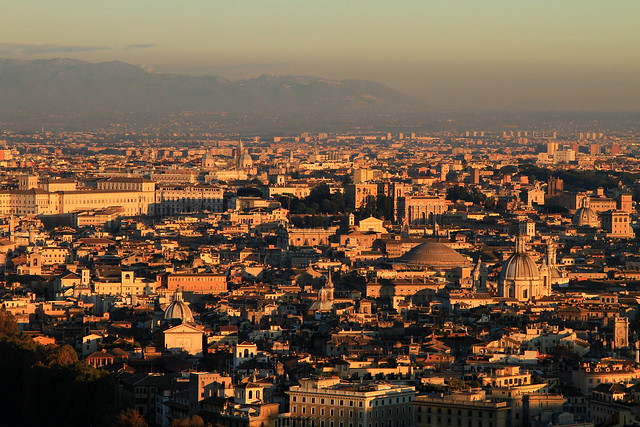
More Janiculum Hill:
The sunset photo, itself, was one of the last ones I took, back down on the terrace again, and in fact the last ones on that entire memory card for the whole trip. I didn't carry around my Big Bertha camera on Saturday at all which was so freeing.
The next vantage point for your consumption is the view from the top of St. Peter's which I did the day after my Janiculum Hill walk. I love climbing things and seeing things from "up high". I can't believe it took me until trip number four to do this climb and I have to say this is going to be a more regular feature of upcoming visits to Rome.
Before I go too far I should mention that this was a temperature-comfortable climb in late November and in fact I took my coat off about halfway up the walk to the top. I think late fall or winter is a perfect time to attempt climbing inside the domes of old churches - the lack of ventilation isn't as bad when it's cool or even cold out. I also did the Florence Duomo climb one winter day a few years ago. I can imagine these climbs would not be as comfortable in July.
The line to go up the cupola is pretty simple to find. After you stand in the really long line to get into St. Peter's - which moves quickly, don't let it scare you off - you have two choices. Go inside the Basilica, or nip around the side where you enter the cupola climb.
Once you are in that line you will see that you have a choice of exercise options. You can either climb all 500+ steps for only 5 euros, or, you can spend an additional 2 euros to take the lift and then only climb the last 320 steps. I took the two gelato scoop option (three scoops would be all 500+ steps) for 7 euros and the lift whisked us to the terrace which is about level with the statues that overlook St. Peter's Square.
When you emerge from the lift you have that large terrace to roam about and take photos. I would suggest that even if you are someone who can't make the rest of the strenuous climb that you would benefit from at least going to this level and seeing the views. They are marvelous even from there.
Once you enter and start climbing, the first stop is a kind of viewing platform from which you can see a closeup of Michelangelo's hard work in all its glory. I included a photo of that as well as one of the mosaics lining the walkway around the inside of the dome. That first interior level is not much of a climb, either, so again, if you are hesitant about long climbs or have health issues I think many people can still do the "inside dome view" walk - just go slowly and it's not far. The stairs at that point are not narrow or spiraled. When you have had enough just turn around and go back - a few minutes walk and you are done.
The rest of the walk to the top, by contrast, is quite the workout! And it gets narrower and narrower and narrower and near the very top it's all angled inward so you are walking with your body bent over to the inside. Watch your head!
I would say the last bits of this climb are at least as narrow as the bell tower climb in Bruges. It's also different from the walk up the Duomo in Florence as the Duomo seemed to be a lot of straight stairs for a good chunk of the climb - and then the final climb to the outside of the Duomo cupola is up a short ladder, which you wait for about 100 people to climb down before you can climb up - I called the Florence Duomo cupola the "clown cupola" because I've never seen that many people come down a ladder from such a small viewing area - on and on and on. But, I digress.
And then finally you emerge and what a view. What. A. View. It just so happened I managed to time this for near sunset so the photos all have that golden hue. How many times can you find the Pantheon in the photos I posted below? Think about the layers of ages and history you are viewing in these photos. How utterly amazing to see those layers from there.

More Janiculum Hill:
The sunset photo, itself, was one of the last ones I took, back down on the terrace again, and in fact the last ones on that entire memory card for the whole trip. I didn't carry around my Big Bertha camera on Saturday at all which was so freeing.
For what it's worth, it wasn't actually that dark, yet, I just cranked down the aperture very low. The sun was setting but we still had a half an hour of dusk so by the time I made it back down to Via della Concilazione I had a final special treat. Two huge swallow murmurations! Glorious, noisy swallow murmurations. They swooped and swayed and chirped and swooped in formation again - loop de loop de loop. It was just magical. I wrote my swallow story a few days ago so if you do a search on "Humans of Rome" on this blog it will turn up.
Tuesday, January 21, 2014
Rome: a High Point on my trip: the Gianicolo AKA Janiculum Hill.
My visit to Rome had many High Points and at least one Low Point. Here is one High Point - with photos.
One of my mornings consisted of a walk from my hotel, the Albergo del Senato, to the Marcellus Theater and across Tiberina Island to Trastevere and up the Janiculum Hill. I have always wanted to do this, but, what prompted me to just go for it this time was my long wait in Piazza San Pietro for the Pope. As we stood in the Piazza I watched a beautiful sunrise up over the Janiculum Hill and decided I wanted to walk up there and view St Peter's from higher up. I woke up the next morning, having shaken off the chill, and decided that was my goal for the day.
The weather was pretty good when I left - blue skies all over and it was crisp and cool - perfect walking weather. I had also planned to make this day my day for the cupola climb as my ending point would be St Peter's and that made sense. However, as I walked, the clouds socked in and by the time I got to St Peter's Square the views that day would not have been quite as good. So I decided to save that for the next day.
A few of Marcellus Theater:
Naturally I had to make a beeline for Santa Maria in Trastevere after I crossed the Tiber and wandered through Trastevere. I wanted to see this third century church and its 13th century mosaics.
As it turned out, mass was in session and I had to be surreptitious to get even one photograph (no flash) which of course doesn't do it justice. They never do.
After my walk through Trastevere but just before I walked up the hill I ended up at John Cabot University's gateway and stood there and reflected upon my college friend Jill Peacock. She graduated college with me back in the days of yore and immediately left to marry her Italian boyfriend whom she had met on a study abroad program. We lost touch but found each other again in the mid 2000s and not due to Facebook - due to an alumni publication. At that time she was working for John Cabot University. When I came to Rome in 2006 we met for lunch near her office and she showed off a little of her neighborhood. It was so interesting to meet someone I had spent my young adulthood with and to talk about our divergent paths - we had not seen each other since graduation. She spoke of her sons, who were truly Italian (she being the only American and being immersed in Italy) and sounded wistful for her family back home. I wasn't quite sure if she was happy in her life decision. We did link up on Facebook at some point after that and sadly she died of cancer about three or so years ago. It was so jarring to learn of a friend's illness and death on Facebook as she had not been posting anything about her illness until the very end. She was the first friend whom I have found out such sad news on Facebook.
I then turned around and started walking up Via Giuseppe Garibaldi. If you follow this winding road, it will take you up up up and up to the Gianicolo. What a beautiful walk it was - cool weather and I was alone almost the whole time.
Along the way I passed his tomb/mausoleum and at the top was a large statue in Garibaldi's honor.
You know how there is a Via Cavour and an Il Vittoriano (named for Vittoriano Emmanuele, Re d'Italia)? Well, he was a contemporary of them and quite an important guy (as if the street names and statues weren't clue enough). He was a central figure in the Italian Risorgimento. Also along my walk I briefly visited San Pietro in Montorio and had a glimpse at the Tempietto by Bramante. Allegedly St. Peter was crucified, upside down, at the site of this church.
After I wandered around the piazza for a while, admiring the view and snapping photos, I started my stroll down the hill towards St. Peter's.
Statue of Garibaldi:
Below are some photos of the views. For anyone reading this: I can pick out the really obvious stuff, but there are some large structures I'm stumped on (mostly churches) if anyone would care to point any out in the comments I would be grateful. I do know that St. John in Lateran has all of the Apostles on top.
Here are the rest from the top; a little over a dozen:
http://www.flickr.com/photos/skywalkerbeth/tags/janiculumwalk/
Here are a few of the sunrise photos I referenced while standing in St. Peter's square early Wednesday morning, which acted as inspiration for my Thursday climb.
One of my mornings consisted of a walk from my hotel, the Albergo del Senato, to the Marcellus Theater and across Tiberina Island to Trastevere and up the Janiculum Hill. I have always wanted to do this, but, what prompted me to just go for it this time was my long wait in Piazza San Pietro for the Pope. As we stood in the Piazza I watched a beautiful sunrise up over the Janiculum Hill and decided I wanted to walk up there and view St Peter's from higher up. I woke up the next morning, having shaken off the chill, and decided that was my goal for the day.
The weather was pretty good when I left - blue skies all over and it was crisp and cool - perfect walking weather. I had also planned to make this day my day for the cupola climb as my ending point would be St Peter's and that made sense. However, as I walked, the clouds socked in and by the time I got to St Peter's Square the views that day would not have been quite as good. So I decided to save that for the next day.
A few of Marcellus Theater:
Naturally I had to make a beeline for Santa Maria in Trastevere after I crossed the Tiber and wandered through Trastevere. I wanted to see this third century church and its 13th century mosaics.
As it turned out, mass was in session and I had to be surreptitious to get even one photograph (no flash) which of course doesn't do it justice. They never do.
After my walk through Trastevere but just before I walked up the hill I ended up at John Cabot University's gateway and stood there and reflected upon my college friend Jill Peacock. She graduated college with me back in the days of yore and immediately left to marry her Italian boyfriend whom she had met on a study abroad program. We lost touch but found each other again in the mid 2000s and not due to Facebook - due to an alumni publication. At that time she was working for John Cabot University. When I came to Rome in 2006 we met for lunch near her office and she showed off a little of her neighborhood. It was so interesting to meet someone I had spent my young adulthood with and to talk about our divergent paths - we had not seen each other since graduation. She spoke of her sons, who were truly Italian (she being the only American and being immersed in Italy) and sounded wistful for her family back home. I wasn't quite sure if she was happy in her life decision. We did link up on Facebook at some point after that and sadly she died of cancer about three or so years ago. It was so jarring to learn of a friend's illness and death on Facebook as she had not been posting anything about her illness until the very end. She was the first friend whom I have found out such sad news on Facebook.
I then turned around and started walking up Via Giuseppe Garibaldi. If you follow this winding road, it will take you up up up and up to the Gianicolo. What a beautiful walk it was - cool weather and I was alone almost the whole time.
Along the way I passed his tomb/mausoleum and at the top was a large statue in Garibaldi's honor.
You know how there is a Via Cavour and an Il Vittoriano (named for Vittoriano Emmanuele, Re d'Italia)? Well, he was a contemporary of them and quite an important guy (as if the street names and statues weren't clue enough). He was a central figure in the Italian Risorgimento. Also along my walk I briefly visited San Pietro in Montorio and had a glimpse at the Tempietto by Bramante. Allegedly St. Peter was crucified, upside down, at the site of this church.
After I wandered around the piazza for a while, admiring the view and snapping photos, I started my stroll down the hill towards St. Peter's.
Statue of Garibaldi:
Below are some photos of the views. For anyone reading this: I can pick out the really obvious stuff, but there are some large structures I'm stumped on (mostly churches) if anyone would care to point any out in the comments I would be grateful. I do know that St. John in Lateran has all of the Apostles on top.
Here are the rest from the top; a little over a dozen:
http://www.flickr.com/photos/skywalkerbeth/tags/janiculumwalk/
Here are a few of the sunrise photos I referenced while standing in St. Peter's square early Wednesday morning, which acted as inspiration for my Thursday climb.
Subscribe to:
Posts (Atom)
